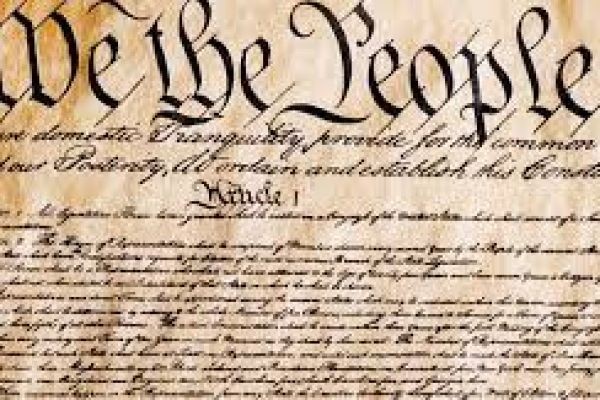The US Constitution is a critical authoritative record that frames the underpinning of the American political and overall set of laws. It was drafted during the Protected Show in Philadelphia, Pennsylvania, in 1787, and afterward approved by shows in every one of the thirteen unique states. The Constitution has had a basic impact in forming and directing the administration of the US.
The Constitution contains a preface and seven articles, each intended to lay out the construction of the national government, characterize the dissemination of abilities among its three branches, and explain the connection between the central government and the states. The prelude sums up the Constitution's key objectives, underscoring the foundation of equity, advancing homegrown peacefulness, accommodating normal protection, advancing general government assistance, and getting freedom for us and our people in the future.
The Constitution's initial three articles frame the powers and elements of the three parts of government. Article I sets up the regulative branch, empowering Congress to make regulations, comprising of the Place of Delegates and the Senate. It additionally frames explicit legislative powers, for example, the position to impose charges, manage trade, and proclaim war. Article II lays out the presidential branch, headed by the President, framing the President's powers and obligations, remembering the job of commandant for the head of the military. Article III lays out the legal branch, making the High Court and conceding power to lay out lower government courts. This article additionally subtleties the purview and powers of the government's legal executive.
The ensuing articles address different parts of the government framework. Article IV blueprints the connection between the states, guaranteeing that each state gives full confidence and credit to the laws of different states. It likewise accommodates the confirmation of new states and ensures a conservative type of government for each state in the Association. Article V blueprints the revision cycle, giving a system for adjusting the Constitution to evolving conditions. Article VI lays out the matchless quality condition, pronouncing the Constitution, government regulations, and arrangements as the incomparable tradition that must be adhered to.
The Bill of Privileges, the initial ten revisions to the Constitution, was added in 1791 to address worries about individual freedoms and freedoms. These corrections ensure basic privileges like the right to speak freely, religion, and the press, the option to carry weapons, security against irrational inquiries and seizures, and the right to a fair and rapid preliminary. Resulting changes, from the eleventh to the 27th, address issues going from states' sovereign invulnerability to the preclusion of survey charges.
The Constitution mirrors a cautious equilibrium between government and state powers, giving a structure to the administration that has persevered for more than two centuries. Its adaptability is obvious in the correction cycle, permitting the record to develop and adjust to the changing necessities of a powerful country.
In rundown, the U.S. Constitution is a demonstration of the insight and premonition of its designers, filling in as the foundation of the American vote-based system and giving a persevering structure to the country's administration.







